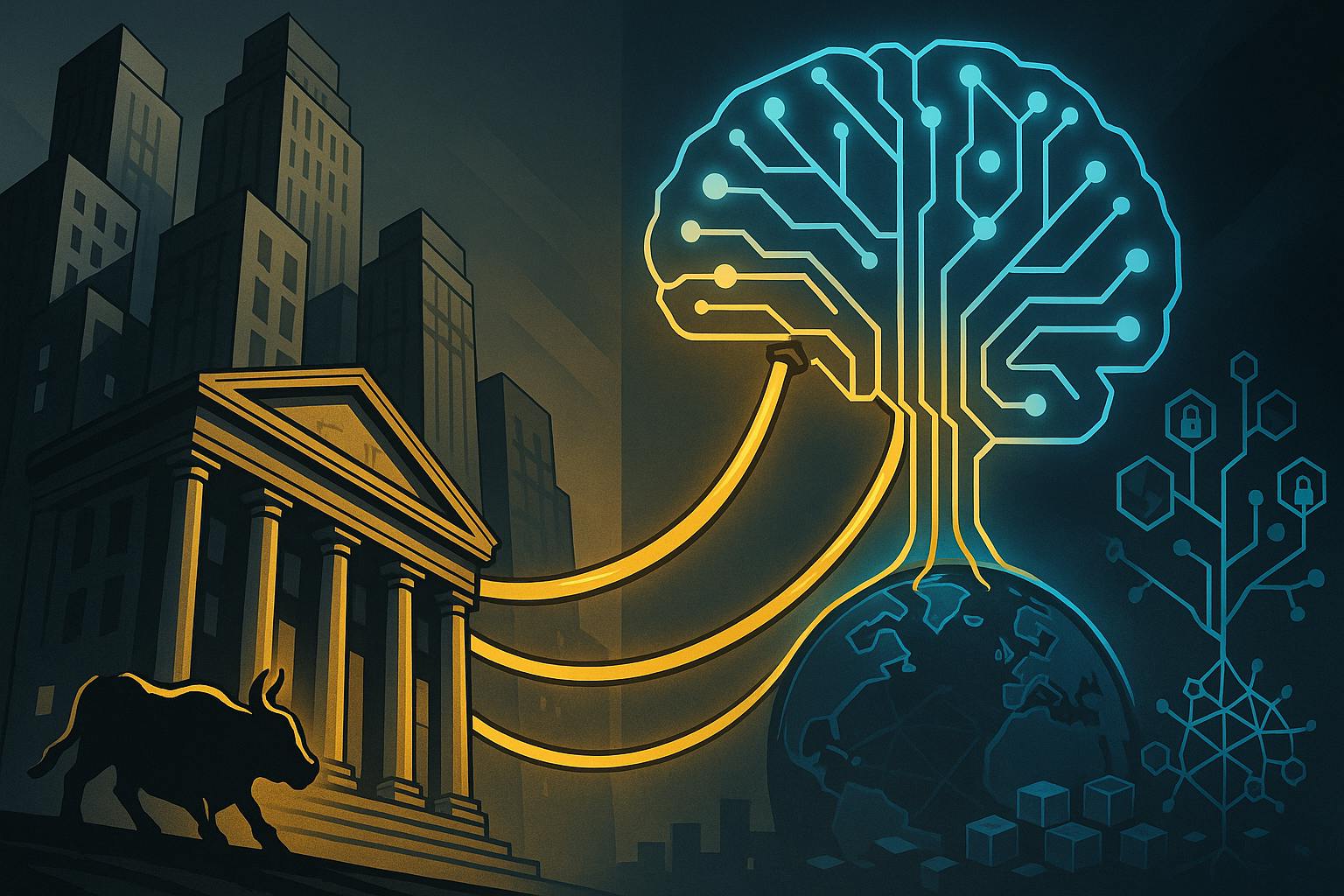The crypto industry spent the last year celebrating every institutional adoption milestone like conquering heroes. BlackRock launching a Bitcoin ETF.
Not at all. Here's the uncomfortable truth that TradFi doesn't want to acknowledge: Wall Street needs crypto's decentralized infrastructure far more than crypto needs Wall Street's validation. And they know it.
Here's what they won’t admit: every major bank is dependent on the same three AI providers that their Big Tech competitors use. Imagine Goldman Sachs' angst when realizing their AI-powered trading strategies run on the same Google infrastructure that Alphabet's own trading desk uses. It's like both boxers training in the same gym, except that one owns the gym and controls the equipment.
The numbers are staggering.
This explains the sudden institutional fascination with "DeFi infrastructure" and "tokenization platforms." It's not about 24/7 settlement or programmable money—those are nice benefits. It's about survival. Wall Street desperately needs AI infrastructure that Big Tech doesn't control, and crypto built exactly that.
Consider the stablecoin legislation in the GENIUS Act. The headlines focus on regulatory clarity, but buried in the details is a poison pill for Big Tech: they can't issue stablecoins without partnering with regulated financial institutions. Translation: the payment rails for the AI agent economy must flow through traditional finance, not around it. It sure looks like Wall Street lobbyists earning their fees.
The convergence is already happening.
The real tell?
The agent economy accelerates this dynamic. When AI agents start transacting autonomously—hiring other agents, purchasing compute resources, trading assets—they need neutral infrastructure. No agent will accept another agent's currency if it's controlled by a potential competitor. They need trustless, permissionless, decentralized rails. Does this sound familiar?
This creates a prisoner's dilemma for Wall Street. Every bank knows they need decentralized AI infrastructure to remain competitive. But being first means admitting weakness. So they hide behind "blockchain initiatives" and "digital asset strategies" while desperately building bridges to the decentralized future they claim to merely investigate.
The smart money sees through the charade. Why do you think Consensys, Pantera, and Galaxy Digital led SharpLink's funding round? They're not betting on Ethereum appreciation. They're betting on traditional finance's desperate need for infrastructure they don't control. Every bank that (inevitably) joins helps legitimize the technology and increase its value.
Here's the kicker: Wall Street can't build this infrastructure themselves. They spent decades optimizing for centralized control, regulatory compliance, and risk minimization. Asking them to build decentralized, permissionless, risk-embracing infrastructure is like asking a fish to climb a tree. They need crypto natives to build it for them.
This reverses the traditional dynamic. Crypto doesn't need to beg for institutional adoption. Traditional finance needs to ensure decentralized infrastructure develops fast enough to save them from Big Tech dominance. Every delay in building cross-chain AI infrastructure is another month of competitive advantage lost to Google and Microsoft.
The 2025 crypto IPO wave isn't crypto's victory lap—it's Wall Street acknowledging what it needs. They need liquid markets to access infrastructure. They need traditional structures to interact with decentralized systems.
Wall Street isn't a kingmaker validating crypto; they're scrambling to access capabilities that they can't create and can't survive without. The power is shifting. The only question is whether web3 will build the infrastructure fast enough to save them from the Big Tech barbarians at the gate.


